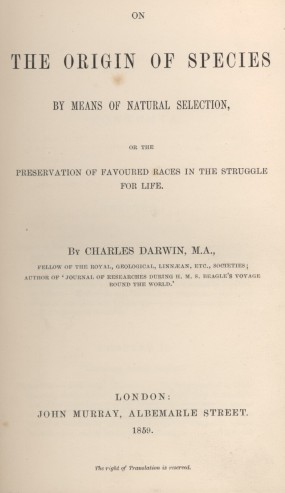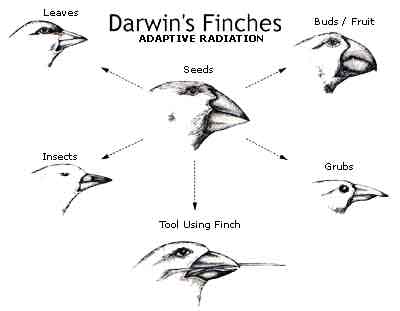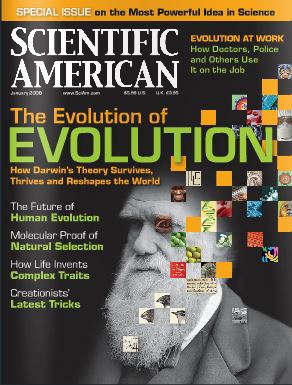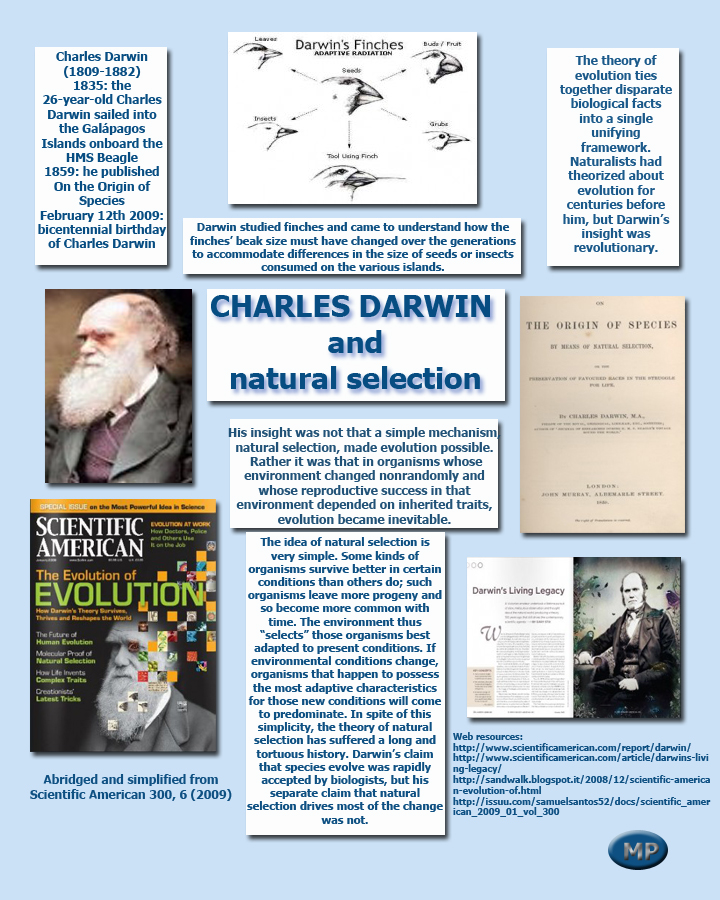Darwin and natural selection
 On February 12th 2009 the world marked the bicentennial birthday of Charles Darwin, a scientist who holds a rightful place alongside Galileo, Copernicus, Newton and Einstein. His theory of evolution ties together disparate biological facts into a single unifying framework. When he published On the Origin of Species in 1859 he triggered a revolution in evolutionary thought. Naturalists had theorized about evolution for centuries before him, but their ideas were generally unfruitful, untestable or wrong. Darwin’s insight was not that a simple mechanism—natural selection—made evolution possible. Rather it was that in organisms whose environment changed nonrandomly and whose reproductive success in that environment depended on inherited traits, evolution became inevitable. On February 12th 2009 the world marked the bicentennial birthday of Charles Darwin, a scientist who holds a rightful place alongside Galileo, Copernicus, Newton and Einstein. His theory of evolution ties together disparate biological facts into a single unifying framework. When he published On the Origin of Species in 1859 he triggered a revolution in evolutionary thought. Naturalists had theorized about evolution for centuries before him, but their ideas were generally unfruitful, untestable or wrong. Darwin’s insight was not that a simple mechanism—natural selection—made evolution possible. Rather it was that in organisms whose environment changed nonrandomly and whose reproductive success in that environment depended on inherited traits, evolution became inevitable.
Natural selection: When the 26-year-old Charles Darwin sailed into the Galápagos Islands in 1835 onboard the HMS Beagle, he took little notice of a collection of birds that are now associated with his name. He misclassified as grosbeaks some of the birds that are now known as Darwin’s finches and came to understand how the finches’ beak size must have changed over the generations to accommodate differences in the size of seeds or insects consumed on the various islands.


The idea of natural selection is very simple. Some kinds of organisms survive better in certain conditions than others do; such organisms leave more progeny and so become more common with time. The environment thus “selects” those organisms best adapted to present conditions. If environmental conditions change, organisms that happen to possess the most adaptive characteristics for those new conditions will come to predominate. In spite of this simplicity, the theory of natural selection has suffered a long and tortuous history. Darwin’s claim that species evolve was rapidly accepted by biologists, but his separate claim that natural selection drives most of the change was not. Indeed, natural selection was not accepted as a key evolutionary force until well into the 20th century.
Abridged and simplified from Scientific American 300, 6 (2009)

http://www.scientificamerican.com/report/darwin/
http://www.scientificamerican.com/article/darwins-living-legacy/
http://sandwalk.blogspot.it/2008/12/scientific-american-evolution-of.html
http://issuu.com/samuelsantos52/docs/scientific_american_2009_01_vol_300

Listening and reading practice:
Scientific American Editor in Chief John Rennie discusses the issue of evolution, listen to the podcast about “The Evolution of Evolution” and read the text online:
http://www.scientificamerican.com/podcast/episode/the-evolution-of-evolution-09-01-07/
You can find the Complete works of Darwin online here:
http://darwin-online.org.uk/
Language in pictures
Language and content can be learned and consolidated in a more visual way through infographics, graphic visual representations of information, data or knowledge.
The following infographic is based on the theme Charles Darwin and natural selection:

Charles Darwin test
A. Answer the following questions:
Who was Charles Darwin?
Why is he still remembered?
What is the title of his most important publication?
Was he the first scientist to theorize about evolution?
Why was his insight a revolutionary one?
What did he do when he was 26 years old?
What is the relationship between Darwin and Galapagos finches?
Were his idea easily accepted? Why?
B. Explain in three lines the concept of natural selection.
C. Try to explain why evolutionism is usually opposed by religious people and creationists.
|